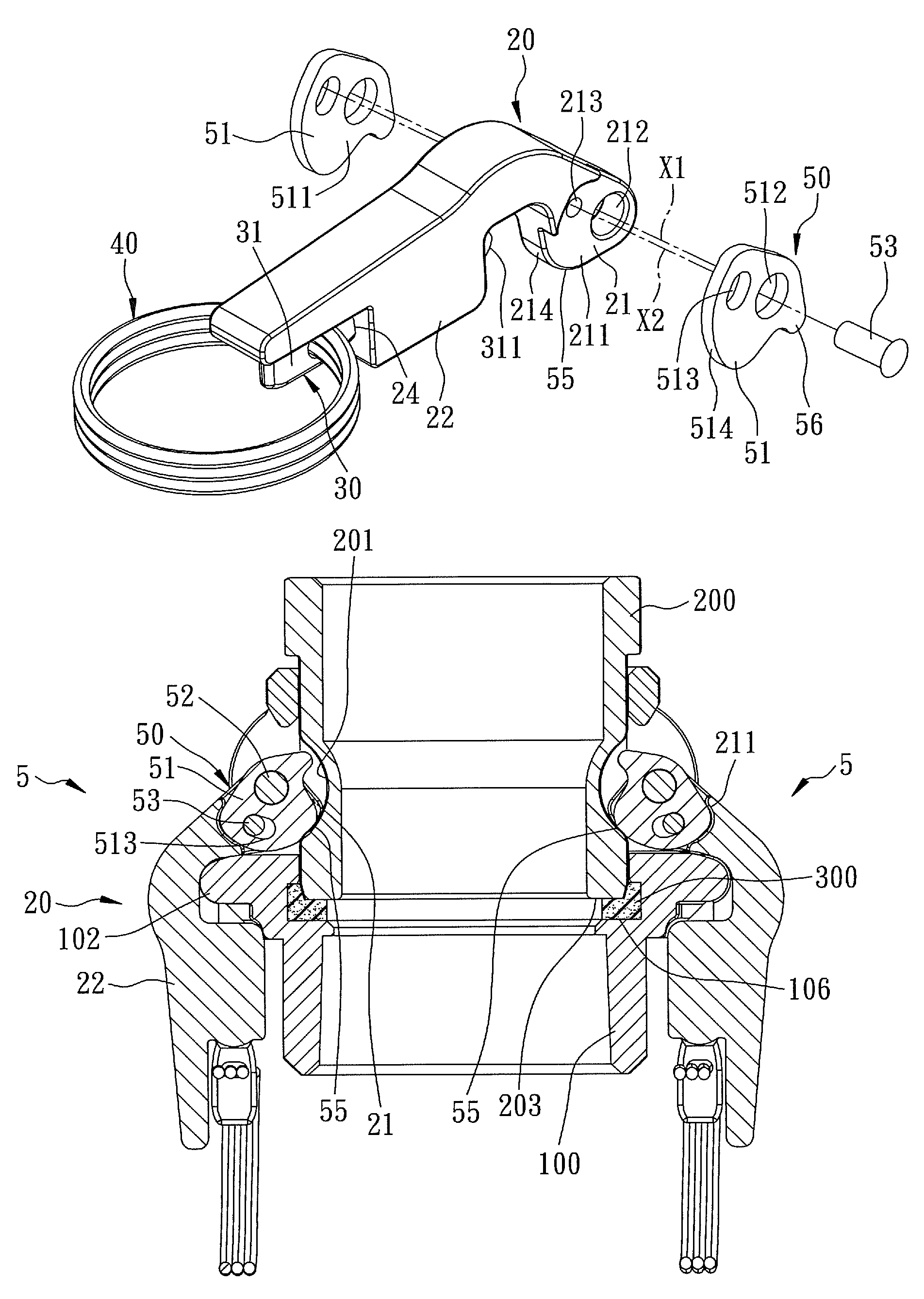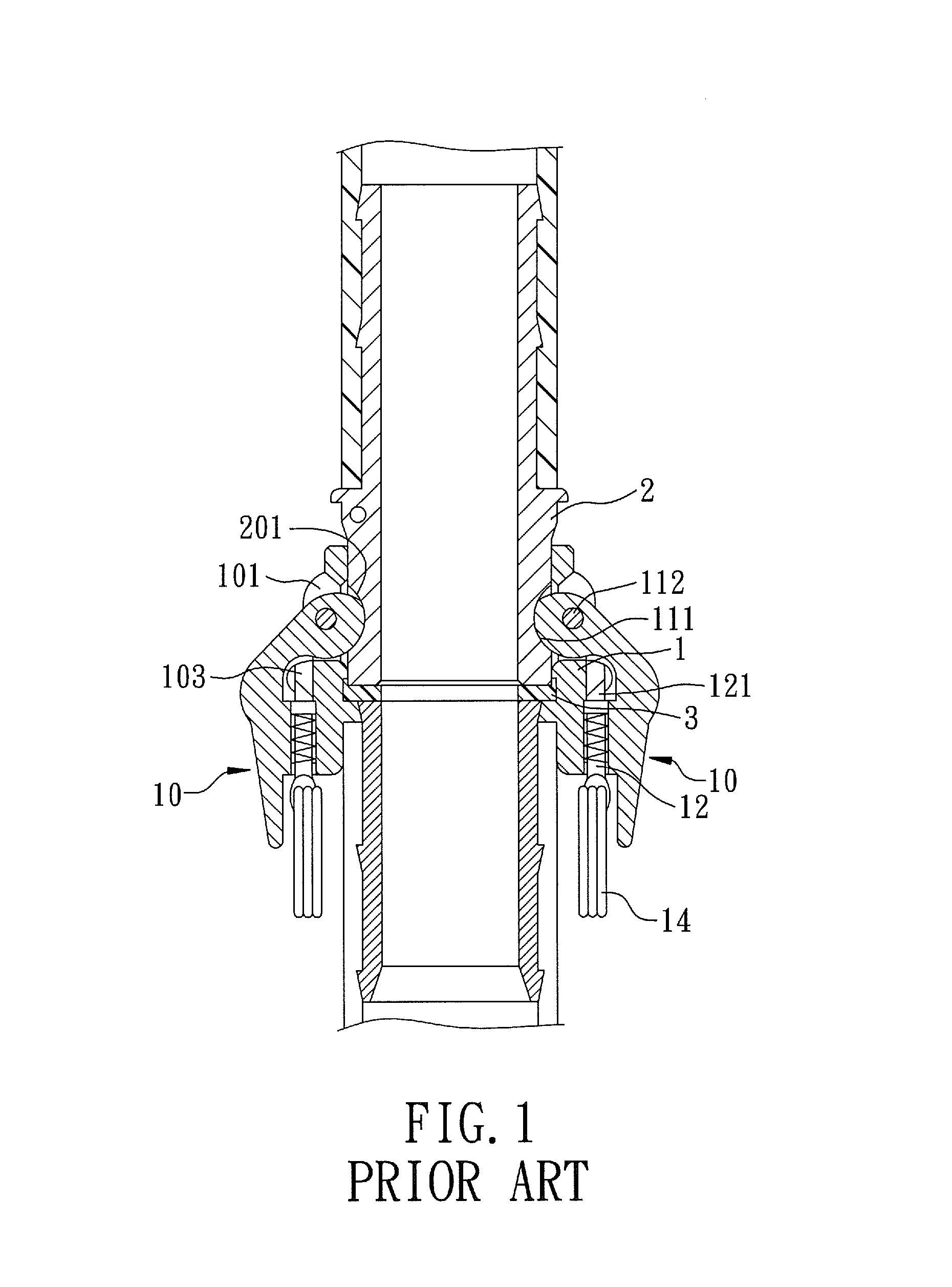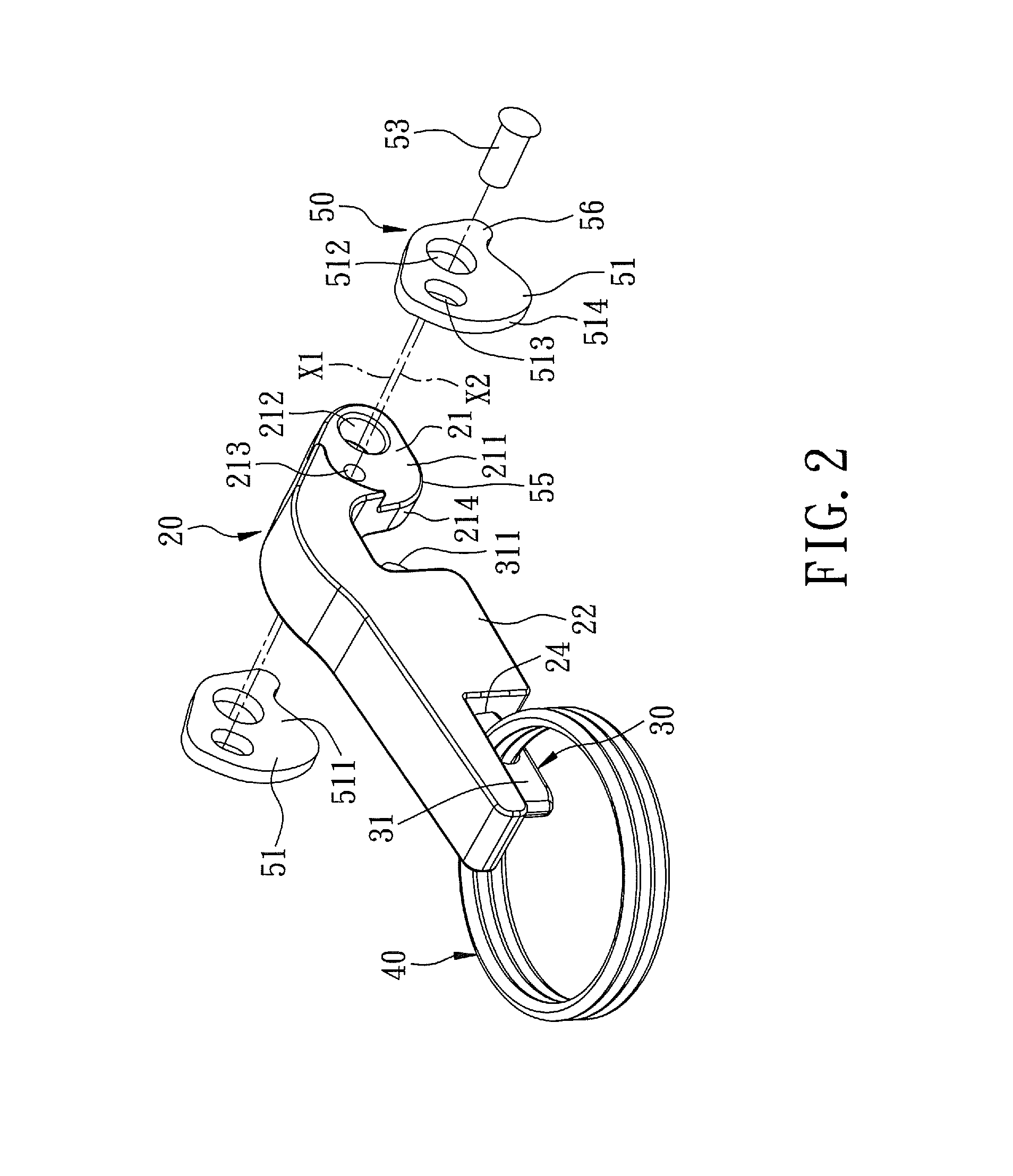Cam-lock actuating device for use in a locking coupling assembly that couples two tubular members
a technology of cam-locking and actuating device, which is applied in the direction of couplings, pipe joints, engine seals, etc., can solve the problems of pressurized fluid being ejected, pollution of the environment, and operator injuries, so as to facilitate the operation of two tubular members and quickly connect and disconnect them. , the effect of convenient operation
- Summary
- Abstract
- Description
- Claims
- Application Information
AI Technical Summary
Benefits of technology
Problems solved by technology
Method used
Image
Examples
first embodiment
[0032]Referring to FIGS. 5 and 6, a cam-lock actuating device 5 according to the present invention is used in a locking coupling assembly to couple two tubular members (not shown). The locking coupling assembly includes a female tubular coupler 100 which has an inner peripheral seat 106, a male tubular coupler which has a tubular marginal portion 200 that is configured to be received in the female tubular coupler 100 and that has a retained region 201, such as an annular groove 201, and a surrounding abutment edge 203, an elastomeric gasket 300 which is disposed between the surrounding abutment edge 203 and the inner peripheral seat 106 to provide a fluid-tight seal when in a compressed state, two lug units 101 which are disposed on an outer tubular surface of the female tubular coupler 100, and two ledges 102 which are disposed adjacent to the lug units 101, respectively, and each of which has a cavity 103.
[0033]With reference to FIGS. 2 to 4, the cam-lock actuating device 5 of thi...
third embodiment
[0041]Alternatively, referring to FIG. 11, in the third embodiment, the position self-adjusting assembly includes an elongated slot 513 formed in the head 21, two journalled holes 515 respectively formed in the angularly positioning members 51 along the moving axis (X2), and a peg 53 extending through the elongated slot 513 to be journalled in the journalled holes 515.
fourth embodiment
[0042]Referring to FIG. 12, in the fourth embodiment, the position self-adjusting assembly includes two elongated slots 513 respectively formed in the angularly positioning members 51, and two pegs 53 integrally formed with the head 21 to be movably engaged in the elongated slots 513, respectively.
PUM
 Login to View More
Login to View More Abstract
Description
Claims
Application Information
 Login to View More
Login to View More - R&D
- Intellectual Property
- Life Sciences
- Materials
- Tech Scout
- Unparalleled Data Quality
- Higher Quality Content
- 60% Fewer Hallucinations
Browse by: Latest US Patents, China's latest patents, Technical Efficacy Thesaurus, Application Domain, Technology Topic, Popular Technical Reports.
© 2025 PatSnap. All rights reserved.Legal|Privacy policy|Modern Slavery Act Transparency Statement|Sitemap|About US| Contact US: help@patsnap.com



